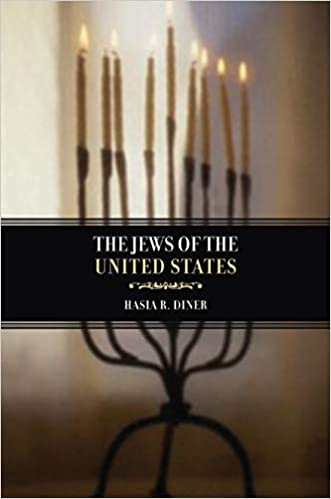[The Jews of the United States by Hasia R. Diner, Berkeley: University of California Press, 437 pages]
Hasia R. Diner’s “chronology of American Jewish life” serves as a welcome reminder of just how old and established the American Jewish community actually is. Sephardic Jews settled in the Dutch colony of New Amsterdam (later New York) in 1654. Mordecai Sheftall, a hero of the American Revolution, was descended from the British Jews who had settled in Georgia in 1733. Northern Jews took part in the tax-on-tea protests, while their Southern brethren joined them in opposing colonial mercantilism; and, “Three thousand Jewish men fought in grey uniforms” for the Confederacy.
In clumsy prose, conceptually and stylistically, Diner, a professor of American Jewish studies at New York University, chronicles the historical forces that shaped the distinct but diverse Jewish-American identity. She pays special attention to the “pivotal century” of 1820-1924, which saw the absorption of a quarter of Europe’s Jewish population (as well as the birth of Zionism, and the growth of the denominations that challenged rabbinic Judaism). Her narrative culminates in the twentieth century’s “search for continuity,” an era that boasted the blessings of success and security and suffered the dilemmas of assimilation.
Having warned readers she intends to dispute the “dominant paradigm,” Diner disdains “the simple yet dramatic pogrom narrative,” which sees the epochal Jewish exodus to America as inspired solely by oppressive anti-Jewish laws and the savage 1881 pogroms. Jewish emigration, she says, continued unabated despite 19th-century Europe’s rising tide of emancipation.
Too true to the dominant paradigm, unfortunately, Diner neglects the critical Jewish role in the halcyon years of American capitalism, or the role of that capitalism in unleashing the Jewish entrepreneurial spirit (another trait European Jews shared with New England Protestants). All too often, Diner’s chronicle becomes a rather hagiographical account of organised American Jewry. Hillel and Hadassah, B’nai B’rith and the Board of Delegates are here, but Milton Friedman is not. What’s Friedman’s Nobel-honoured celebration of the virtues of the free market against the achievements of the National Council of Jewish Women? And it is astonishing that Judah P. Benjamin, the first Jewish-American cabinet minister (Secretary of War, then State, in Jefferson Davis’ cabinet), doesn’t rate a mention either.
Another of the academy’s “dominant paradigms”—the Marxist Labor Theory of Value—is invoked to explain the pace and scale of production in America during the “pivotal century.” Diner believes immigrant labor produced American abundance, which then undermined European economies. Contra Marx and Diner, limited government and the attendant economic liberties of private property rights and freedom of contract allowed Americans to save and invest capital, producing the demand for labor and sowing the ground where Jewish entrepreneurship flowered.
Diner is exceedingly fair, however, in her assessment of American anti-Semitism. Notwithstanding the continued persistence of shameful prejudice against Jews, and despite the fact that religious freedom and the right of political participation were earned by degrees, Diner concludes: “In contrast to the experience of the Chinese and other ethnic groups, Jews endured small acts and limited episodes of political marginalisation.”
And yet Diner is loath to give America the credit it deserves. Scholars such as Cecil Roth, Max Dimont, and David Conway see the American affinity for Jews (and for Israel) as rooted in Protestantism, more oriented towards the Old Testament than Roman Catholicism, but to Diner, this is mere tolerance by default: “[Jews] were not Catholics in a fervently Protestant society.”
Diner frames the Jewish struggle for inclusion in American society as a struggle to maintain an impenetrable wall between Church and State. Jewish representatives have long insisted that America must evolve into “a secular and religiously neutral society,” a stance resting on dubious legal precedents set by a hyperactive Supreme Court.
There is no doubt about Diner’s stand on the culture war now raging across America, which pits the “moral majority” (exemplified by the benign fans of Mel Gibson’s “The Passion of the Christ”) against the elites in academia, journalism, Hollywood and the arts. As always, the Left—contemporary Jewish leadership included—squints at “small-town white Protestant fundamentalists” (Diner’s words) from behind all-too-familiar parapets, determined not to rest until the last nativity scene is removed from the public square.
Diner’s book, unfortunately, swells this chorus.
©2005 Ilana Mercer
Reviewed in London’s Jewish Chronicle,
where it was entitled, “Stars and Stripes of David.”
September 9
CATEGORIES: America, Anti-Semitism, Book Reviews, Capitalism, History, Jews & Judaism

 print
print